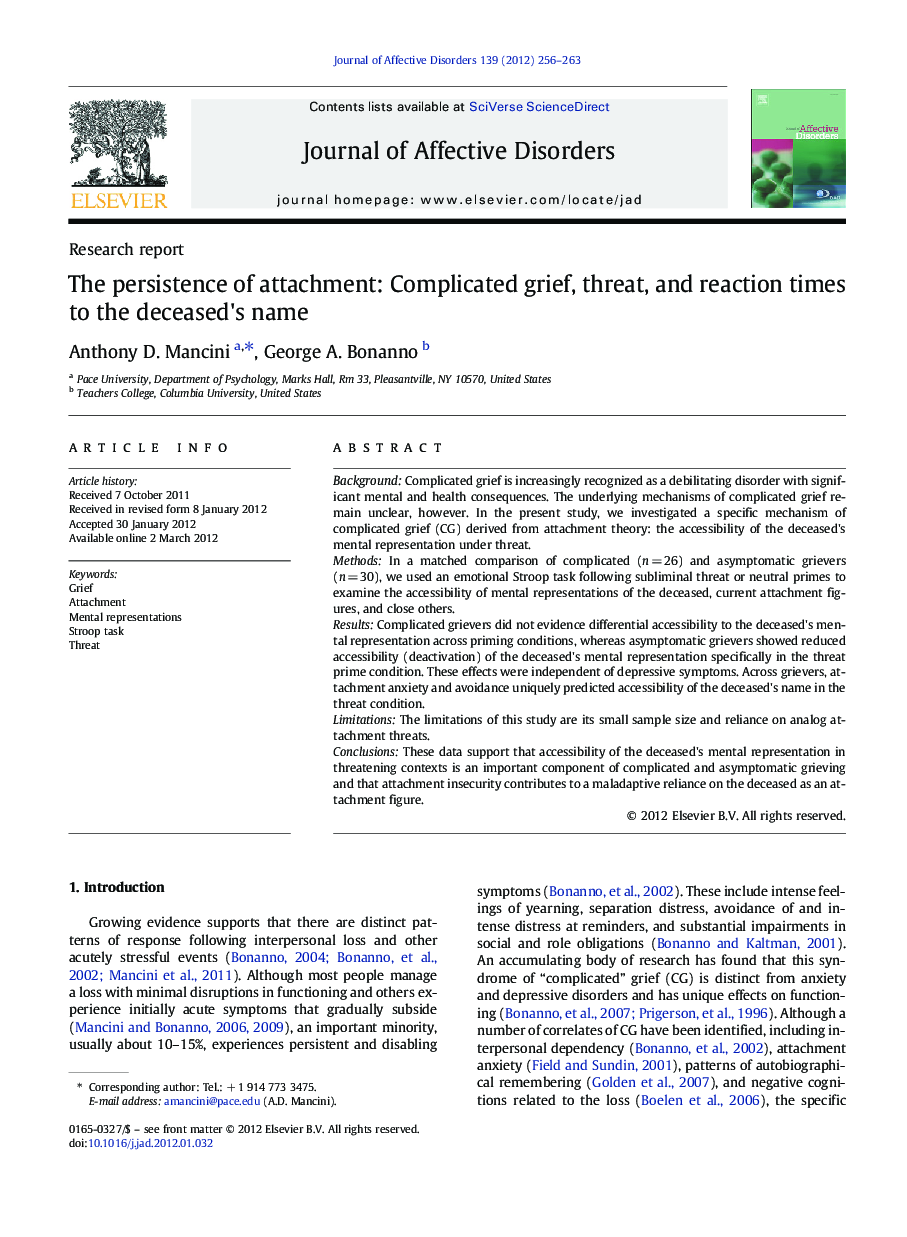| کد مقاله | کد نشریه | سال انتشار | مقاله انگلیسی | نسخه تمام متن |
|---|---|---|---|---|
| 4186357 | 1277578 | 2012 | 8 صفحه PDF | دانلود رایگان |

BackgroundComplicated grief is increasingly recognized as a debilitating disorder with significant mental and health consequences. The underlying mechanisms of complicated grief remain unclear, however. In the present study, we investigated a specific mechanism of complicated grief (CG) derived from attachment theory: the accessibility of the deceased's mental representation under threat.MethodsIn a matched comparison of complicated (n = 26) and asymptomatic grievers (n = 30), we used an emotional Stroop task following subliminal threat or neutral primes to examine the accessibility of mental representations of the deceased, current attachment figures, and close others.ResultsComplicated grievers did not evidence differential accessibility to the deceased's mental representation across priming conditions, whereas asymptomatic grievers showed reduced accessibility (deactivation) of the deceased's mental representation specifically in the threat prime condition. These effects were independent of depressive symptoms. Across grievers, attachment anxiety and avoidance uniquely predicted accessibility of the deceased's name in the threat condition.LimitationsThe limitations of this study are its small sample size and reliance on analog attachment threats.ConclusionsThese data support that accessibility of the deceased's mental representation in threatening contexts is an important component of complicated and asymptomatic grieving and that attachment insecurity contributes to a maladaptive reliance on the deceased as an attachment figure.
Journal: Journal of Affective Disorders - Volume 139, Issue 3, August 2012, Pages 256–263